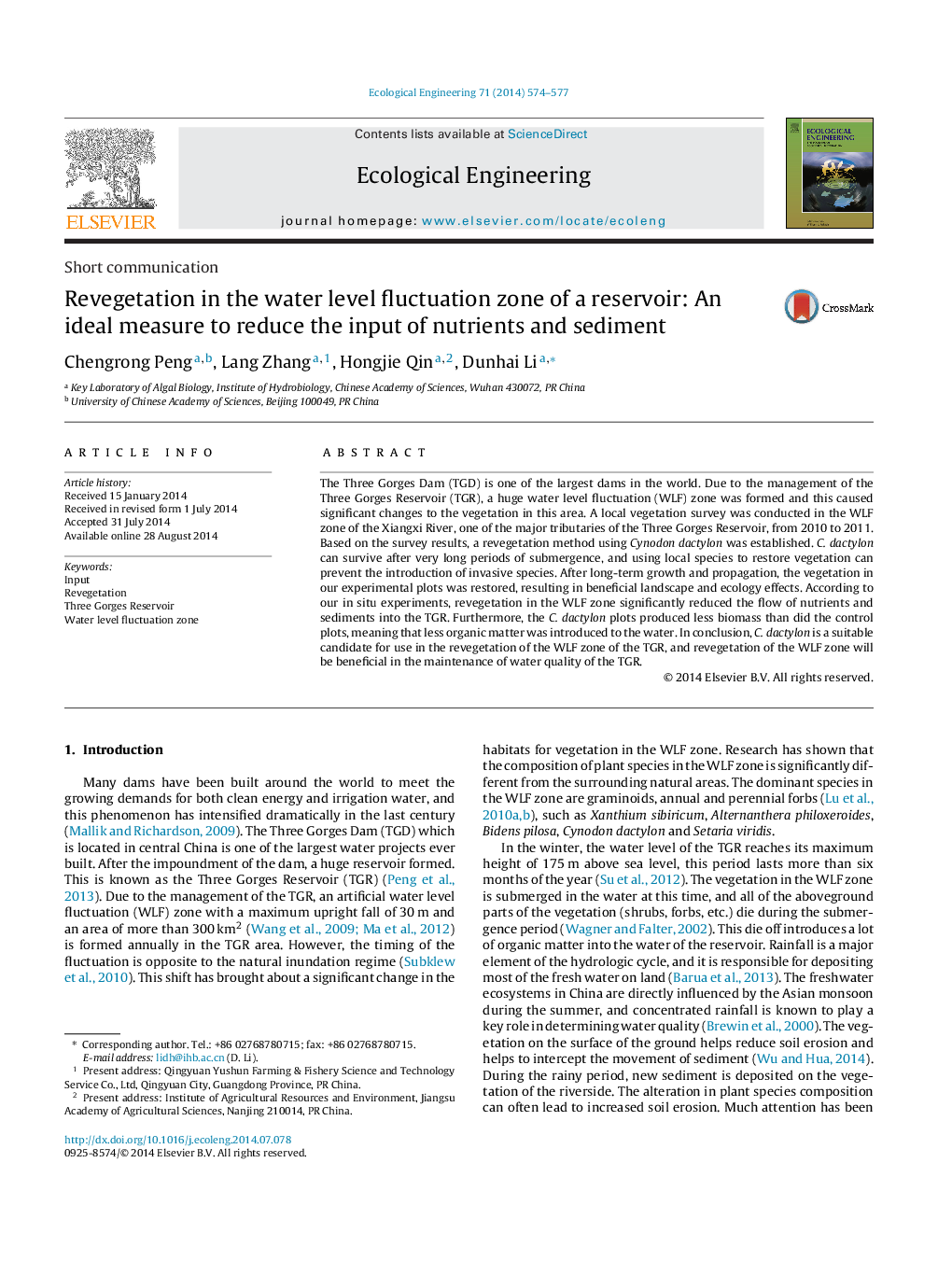| کد مقاله | کد نشریه | سال انتشار | مقاله انگلیسی | نسخه تمام متن |
|---|---|---|---|---|
| 4389197 | 1618028 | 2014 | 4 صفحه PDF | دانلود رایگان |
The Three Gorges Dam (TGD) is one of the largest dams in the world. Due to the management of the Three Gorges Reservoir (TGR), a huge water level fluctuation (WLF) zone was formed and this caused significant changes to the vegetation in this area. A local vegetation survey was conducted in the WLF zone of the Xiangxi River, one of the major tributaries of the Three Gorges Reservoir, from 2010 to 2011. Based on the survey results, a revegetation method using Cynodon dactylon was established. C. dactylon can survive after very long periods of submergence, and using local species to restore vegetation can prevent the introduction of invasive species. After long-term growth and propagation, the vegetation in our experimental plots was restored, resulting in beneficial landscape and ecology effects. According to our in situ experiments, revegetation in the WLF zone significantly reduced the flow of nutrients and sediments into the TGR. Furthermore, the C. dactylon plots produced less biomass than did the control plots, meaning that less organic matter was introduced to the water. In conclusion, C. dactylon is a suitable candidate for use in the revegetation of the WLF zone of the TGR, and revegetation of the WLF zone will be beneficial in the maintenance of water quality of the TGR.
Journal: Ecological Engineering - Volume 71, October 2014, Pages 574–577
